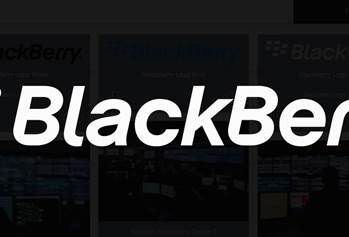Samara Lynn and Fahmida Y. Rashid
Virtualisation promises many things: lower energy costs, less complexity in the data centre, lower hardware costs, freeing up physical space, better security and lower costs of deployment, etc.
As solution providers start migrating customer infrastructure to virtual environments, they are discovering that the promises tell only half the story.
Virtual environments have their own set of challenges that require attention.
It is easy for the costs of managing virtual servers to spiral out of control.
Virtualisation has reached a point where it’s having some growing pains, according to Ken Klapproth, vice president of marketing at Entuity Ltd. “Do
I hop more on board or jump off?” he said.
Some concerns don’t go away just because the physical servers have.
There are still questions about security, management, maintenance, audits, optimisation and availability.
In fact, these concerns are even more complicated in the virtual environment because there are multiple layers to focus on: the actual physical server host, the base operating system, the physical network, the virtual platform, the individual machines, the guest system’s operating system, the virtual network and the various applications running on each machine.
The Test Center evaluated some applications from a variety of vendors to assess the tools available for an existing virtual environment.
Each product varied in its area of focus, looking at management, data backup and recovery and networking.
For example, Sun Microsystems Inc. offers the Sun xVM Ops Center to manage multiple virtual machines.
Replify Ltd.’s Reptor Accelerator is a WAN optimisation application, and Uptime Software Inc.’s Uptime 5 handles network monitoring. Finally, Symantec Corp.’s Backup Exec 12.5 and Backup Exec System Recovery 8.5 provide data backup and recovery for virtual machines.
Sun xVM Ops Center 2.0
Part of Sun’s xVM portfolio, which includes VirtualBox, Server and VDI, the Ops Center is the management framework that takes care of all the virtual machines as well as the physical server.
While xVM is a family of products specifically for the x86 platform, Sun’s Ops Center supports both x86 64-bit systems and SPARC-based systems.
Ops Center allows solution providers to manage the virtual machine, firmware, underlying operating system and the applications running on the virtual machine from a single user interface.
Through xVM Ops Center, solution providers have access to four types of tools to manage virtual systems: discovery, provisioning, updates and management.
When Ops Center discovers and registers virtual systems, it collects information about the system’s architecture, hardware, operating system and running applications.
It also collects information about the physical server, host’s hardware and makes the information available in the dashboard. The discovered systems can be organised in logical categories that may not match the actual data centre. A relational topology map also is available to show the relationships between guest, network, storage and image systems.
For large data centres, and especially for distributed data centres, auto-discovery and being able to view the hardware information in a single view is very powerful and helpful.
Sun xVM Ops Center automatically monitors all the assets and handles upgrades and patches for both the underlying operating system and the virtual system’s operating system.The Linux and Solaris instances remain current, improving the system’s security and stability.
The multiplatform support is most evident here, as Ops Center can patch operating systems within Zone and LDom, Sun’s SPARC-based virtualisation technologies, as well as for the xVM virtual machines.
The Ops Center can also provision the virtual machines, regardless of whether they are running Windows, Linux or Solaris.
Ops Center allows updates and related dependencies to be installed in a simulation to see what the effects would be before actually making the changes.
Finally, Ops Center includes extensive reporting for IT compliance, inventory management and trend analysis on historical data such as power consumption and memory and CPU utilisation. It can perform resource optimisation to minimise bottlenecks, track each virtual system’s status and has migration capabilities.
Sun xVM Ops Center is available as a free download, but commercial subscriptions that include support and services start at US$100 per managed server.
There are other types of subscriptions, depending on the type of support required.
Replify Reptor Accelerator 2.1.1
Virtualisation is used in an innovative way by Replify. Its product, Reptor Accelerator v 2.1.1, is a software-based WAN optimisation solution. It consists of the Reptor virtual appliance and the Reptor client.
Replify’s solution is unique in that it is a virtual machine. Software-based WAN optimisation tends to be more cost-effective than hardware solutions. Add the virtualisation factor with a product such as Replify’s and a solution provider is looking at even greater savings because there is no need to purchase additional equipment for a data centre.
The virtual appliance requires VMware Server v1.0.4 or later, or VMware Server ESX. It also can run on Citrix Systems Inc.’s XenServer, and a version for Microsoft Corp.’s Hyper-V is available upon request. The client application requires Windows XP, Vista, or Windows Mobile, and the .Net framework version 2.0.
With the premade virtual machine, installing Reptor is simple. Reviewers easily imported the virtual machine into VMware ESX.
Once that was done, network configuration and client installation were performed with ease.
Replify has a three-way strategy: compression, network caching and application optimisation. The caching software module’s name, XDR, stands for Cross-Protocol Data Reduction. Both ends of the WAN “learn” the data payload as it flows between the clients’ and optimised servers.
Caching is done as a collection of data blocks rather than as entire files. After caching, only references to the data blocks are sent across a WAN. Thus, when a file is changed, only the changes get sent across.
Appliance servers can be configured either through the Replify interface or the Reptor Enterprise Manager. The Enterprise Manager is a separate module used to configure the application for larger, multiappliance deployments.
The virtual appliance keeps the connected client machines up to date with the latest rules. These are rules to optimise traffic from configured application servers.
The client program runs as a system tray object. A neat feature is the Connection Spy, which displays the connections on the client that are being accelerated by Reptor. Clients can be customised in how they update, which protocol options are optimised and how the program starts up.
Combining an efficient WAN optimisation solution with a robust virtualisation product such as VMware ESX server amplifies the benefits of a product such as Reptor Accelerator.
It is a two-fold optimisation solution-proven metrics and a stable platform. ESX server provides a platform optimising server resources and providing high availability and continuity in case of failure with the snapshot feature.
Symantec Backup Exec 12.5 and Backup Exec System Recovery 8.5
Symantec offers data and system recovery of virtual and physical systems in its Backup Exec family of products. Backup Exec 12.5 backs up files so they can be recovered when needed, and Backup Exec System Recovery 8.5 recovers entire failed systems.
After installation, it’s a simple matter to schedule jobs to back up files, individual drives or the entire system. Single files or the entire system can be recovered from the backup.
The software also protects virtual systems using specialised agents. These agents create image-level backups of the virtual server. There’s actually no need to create a separate file-level backup inside the VM.
Backup Exec’s virtual agents can back up an unlimited number of virtual machines while backing up the physical server files and applications. Backups can be written to tape or to disk. Recovery is possible directly from the host’s bare-metal state. There is no need to reinstall and reconfigure operating systems or recreate virtual machines before recovery.
For file-level backups, System Recovery separates system and data from the hardware information when making the backup, but can replace everything during recovery: the operating system, applications, drivers, registry, data and profiles.
This separation means the software is not limited to restoring to the same hardware, but can also recover the backup onto a different hardware or to a virtual machine. To recover to a virtual machine, apply the “Convert to Virtual Disk” tool to the backup.
The virtual machine can optionally be split into 2 GB files or saved directly to a VMware ESX server. The reverse is also possible: the software installed on a virtual machine can back up the VM, and then recover to a physical machine instead.
For solution providers, this is an opportunity: the data recovery tool can be used as a migration tool to move system images between physical and virtual machines.
Symantec’s Restore Anyware feature ignores the hardware configuration when restoring the data onto new hardware or the virtual machine. Restore Anyware examines the backups to find hardware-specific drivers, and replaces them with generic substitutes.
This way, during recovery, the specific drivers don’t fail, looking for missing hardware. The correct drivers can be reinstalled after the recovery (with generic drivers) is complete.
Symantec is trying to simplify data protection by ensuring a single product can handle both physical and virtual servers.
However, this functionality is currently available only for virtualised systems running on EMC’s VMware platform or Microsoft’s Virtual Servers, including the Hyper-V hypervisor.
Citrix’s XenServer will probably be the next platform to be supported.
Uptime 5
Uptime Software recently released version 5 of its network monitoring tool “that just works.” It is much simpler than Sun’s xVM Ops Center, making it a better fit for smaller environments and less complex data centres.
Uptime 5 offers server monitoring, capacity planning, service-level management, virtualisation management and application monitoring.
The software consists of two components, the monitoring server and the agent. The server sits on a central machine and collects all the information reported by the various agents.
The agents support various platforms, including Windows and Linux servers, as well as virtual servers on VMware ESX Server and ESXi. Uptime 5 can automatically discover virtual machines on the network.
Uptime helps controls virtual sprawl by auto-discovering all guest systems – forgotten VMs are found and new instances identified as soon as they are created – on the ESX.
The software also includes virtualisation-specific metrics for workload measurement that analyse VM performance and provide suggestions for improvement. For example, Uptime uses VMotion to generate reports on the virtual server’s performance.
In addition, Uptime can run consolidation reports on the network to identify other areas and servers that can be virtualised. This is a particularly helpful report since it helps solution providers identify areas of cost and performance savings for the customer.
The browser-based interface is very straightforward, extending across platforms, environments, applications and databases. All the information from the virtual environment – including VMware, AIX and Sun’s Zones – are available for monitoring.
Server resources – physical and virtual – are tracked and can be graphed to determine how they are being used. A report looks for potential resource dependency bottlenecks and identifies existing and possible problems.
Once the management server is up and running, the agents are created by assigning the IP address of the system to be monitored.
The agents provide information on resource dependencies, such as disk drives, CPU, installed operating system, swapfile size and available network interfaces.
The agents also can monitor installed business applications such as databases (MySQL, Oracle, SQL Server, Sybase), ERP and CRM systems, email servers (Exchange) and web servers.
Bottom line
Virtualisation should not require a whole new set of tools to manage. This is to keep ROI as well as to maintain the level of complexity.
With the exception of Replify’s Reptor Accelerator, all the evaluated tools support both physical and virtual infrastructures. Symantec provides a single set of tools to protect data, period.
The source environment doesn’t matter. Uptime and Sun’s management frameworks monitor virtual machines, but don’t ignore the physical host’s health.
The best virtualisation tools are the ones that don’t forget that there is still a physical server under all those guest systems.
Turbocharging
By
Staff Writers
on Nov 27, 2008 3:50PM

Got a news tip for our journalists? Share it with us anonymously here.
Partner Content

Tech Buying Budgets for SMBs on the Rise

Promoted Content
From Insight to Opportunity: How SMB Service Demand is Shaping the Next Growth Wave for Partners

Shure Microsoft Certified Audio for Teams Rooms

Channel faces AI-fuelled risk as partners lag on data resilience, Dicker Data summit told

Tech Data: Driving partner success in a digital-first economy




.jpg&w=100&c=1&s=0)
_(8).jpg&w=100&c=1&s=0)









.jpg&q=95&h=298&w=480&c=1&s=1)


